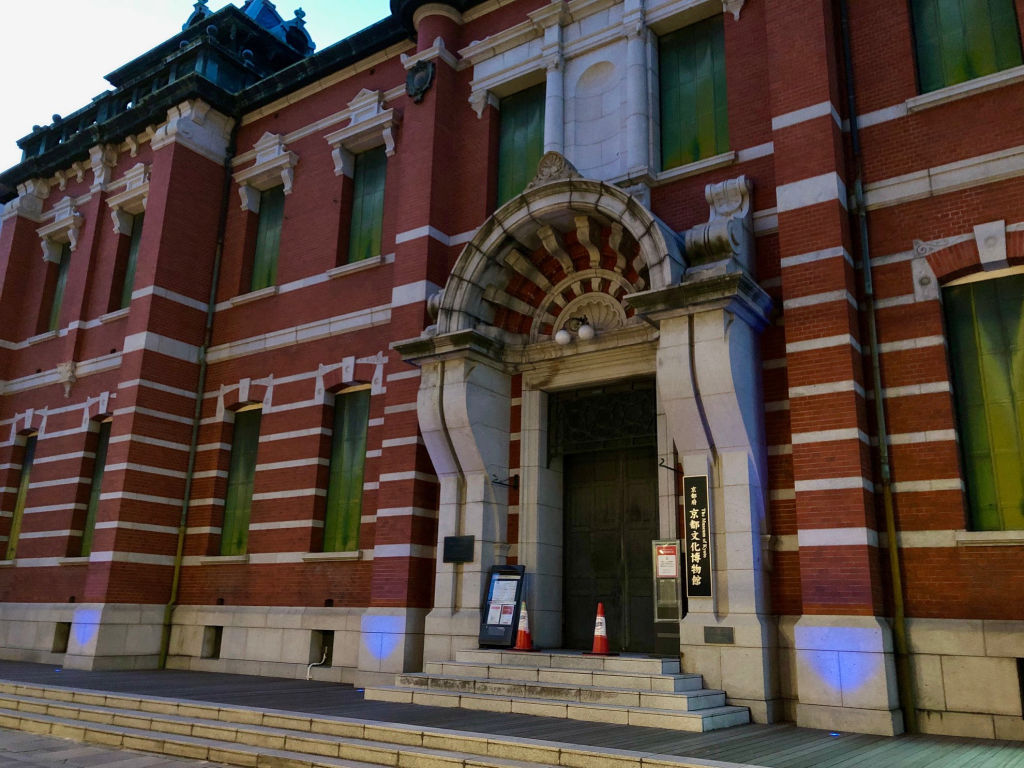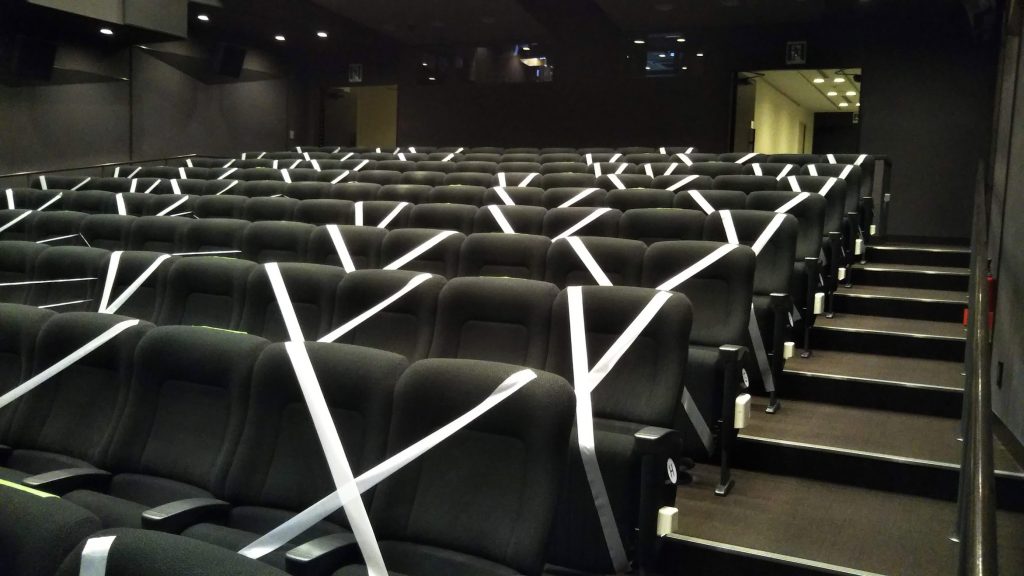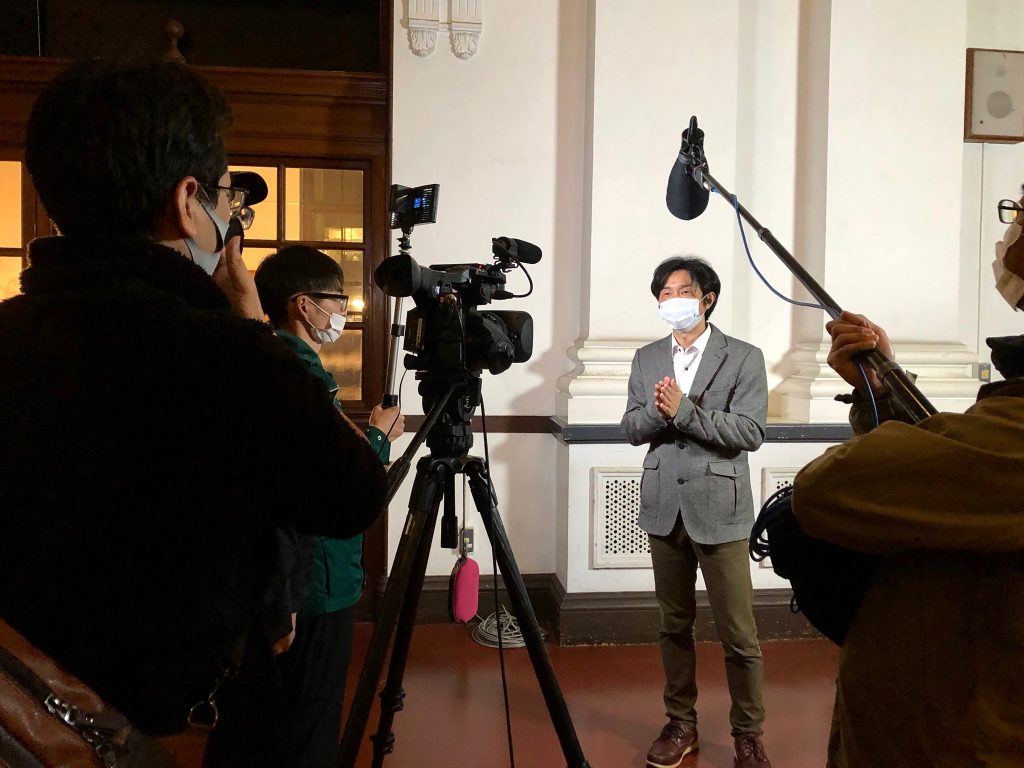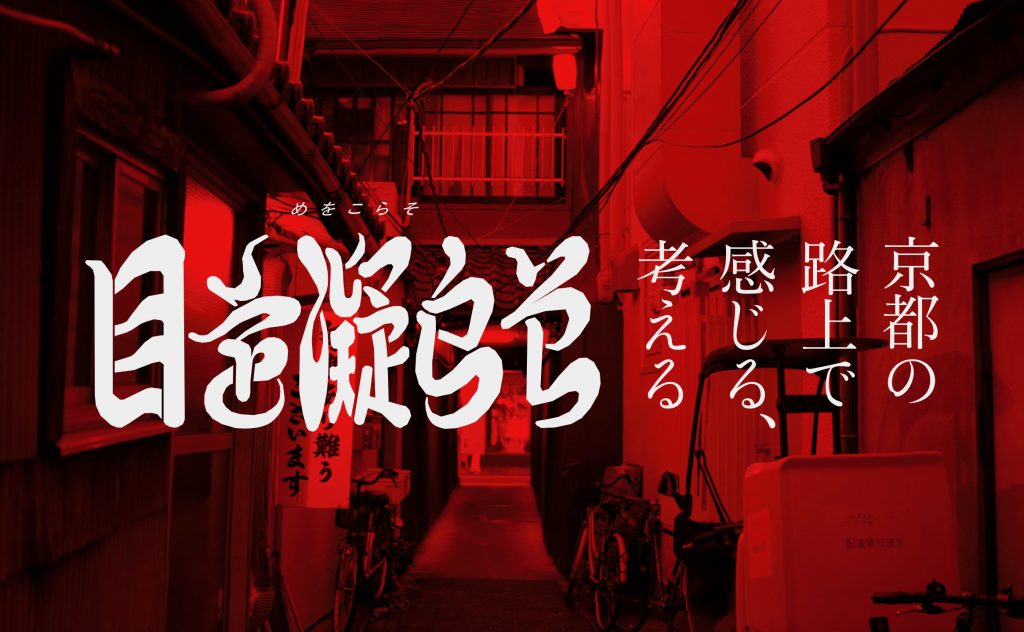
September 15, 2021
The Focal Point of Museum Activities During the Pandemic: Efforts and Innovations by The Museum of Kyoto
[2021.9.15]
Masakage MURANO
Curator, The Museum of Kyoto
Impact of the Coronavirus on the City and the Museum
The first case of the coronavirus in Kyoto, where The Museum of Kyoto resides, was confirmed on January 30, 2020, which was the 12th case in Japan. The virus had a widespread negative impact on many sectors of society. In Kyoto, the tourism sector was heavily influenced, which also happened to be the backbone of the city planning. But the city’s over-tourism and incessantly growing number of tourists had been a growing issue, so some residents had agreed that the reduced tourists around March 2020, evened out the population density back to its original state and was “just right.” However, by June, the situation had become desperate.
There were cries of concern among those with whom I had a personal relationship with, including Inns and hotels that hosted annual school trips, and galleries. It is now one year later, and the number of closed hotels and vacant shops continues to rise.
On February 25, 2020, “The Policy on Countermeasures against the Coronavirus Infection” was presented by the government and became the first measure to directly impact museum activities in Kyoto Prefecture. Based on this policy, Kyoto prefecture had requested for the museum to close from February 28th to March 23rd. Furthermore, after the first COVID cluster was confirmed in Kyoto on April 2nd, there was an urgent request from the prefectural and municipal governments, followed by the declaration of a state of emergency by the Government of Japan from April 17th to May 21st, so our museum closed from April 4th to May 18th. We were able to stay open during the second state of emergency at the beginning of 2021 but were forced once again to close our doors during the third state of emergency from April 25th to May 31st. During this period, the exhibition that we had spent so long preparing had to be canceled, and the artworks remained unseen by the public. The number of visitors to the museum had decreased 60 percent compared to previous years and came to a standstill. Managerial issues did not start and stop with the museum but stemmed out to our tenants, and other exhibition organizers outside of the museum.

Accumulated Effort and Ingenuity
What should/could we have done under such circumstances? Honestly, I am still searching for the answer. However, the museum staff has applied their efforts and innovations and turned them into action. Even the seemingly smallest of efforts had an impact on the bigger picture. The front yard staff has the highest probability of coming into direct contact with infected visitors, and so they discussed topics such as the operation of the front desk, body temperature monitoring, alcohol disinfection, and simulated how to guide the visitors to the exhibition rooms and added safety measures daily. The backyard staff also worked quickly to establish the best and safest manner to welcome the visitors by preparing and installing a temperature monitoring system and equipment, disinfection, and infection prevention panels. They were also in close contact with the government of Kyoto to gain the latest information. The leading museum staff worked with event organizers to devise digitalized events, so they can still make use of the museum’s rental space.


The curators also searched for things that they could do. The leading curator for the exhibition had been communicating online with the Itabashi Art Museum for the traveling exhibition, “Exploring the Alternatives: Avant-Garde Painters in Wartime Tokyo and Kyoto” which opened in June 2021. I was astonished to find that even the interviews with the bereaved families of the authors, and even the surveys regarding the works had been conducted online. Taking advantage of the fact that the participating museums in this exhibition were scattered across different prefectures, we were able to participate live during the other museum’s intraregional surveys via iPad from a remote location. At our museum, online meetings became a daily occurrence, as I’m sure it was for many museums. However, conducting online surveys and interviews was foraging into new territory.
In addition to inter-museum and inter-curatorial collaborations, curators have tried to broaden the scope of collaborative projects to that outside of the museum. Since 2014, I have been working with teachers and students to research, organize, and disseminate various materials located in their schools (elementary, junior high, and high schools) in Kyoto Prefecture. In the exhibition to introduce the school’s collection to the public, we planned and conducted a guided tour of the exhibition by the students themselves, so that they could talk about the results of their studies during the school year. We had planned to do the same for the exhibition starting in September 2020, but due to the pandemic, we decided to use SNS. After consulting with teachers and students, we released nine videos of exhibition guides on the Museum of Kyoto’s official Twitter account titled “ A Series of Exhibition Guides by the Students of Ohki Senior High School, Kyoto Cultural Studies.” Each video was less than one minute, and the contents were discussed among teachers, students, and curators. Several takes were filmed for each video while figuring out the clarity of the content, as well as the flow of words. In the end, the students’ opinions were the main factor in finalizing the video. As a result, the first video of the series has proved to be successful with over 2,100 views. It was an encouraging response to a new undertaking.
This year, we are also preparing online exhibitions for; “Kyoto in Color Photography: 1945-1952 and beyond” in which color photographs from post-war Kyoto will be displayed, and “Exhibition About Bon Dance in Kyoto” in which we introduce cultural traditions in Kyoto.


Efforts of Digitalization
Up to this point, I have described our efforts to digitalize museum activities, but for people to think we started to do so only after the pandemic started, would not be completely truthful. For some time now, the curators of digital archives have been taking on many challenges. For example, there is the “Me Wo Koraso (i.e., meaning “to gaze”)” project, which is jointly run by the Explore Kyoto in History, Cluster Executive Committee, of which the museum is a core member, and Sensory Media Laboratory. It is an experimental media project that was planned and launched in 2019, based on the concept of “feeling and thinking on the streets of Kyoto.” This project cannot simply be explained as an online media to introduce Kyoto and its culture, because some might misconstrue it as something similar to the online gallery talks on YouTube. Whereas a gallery talk on YouTube is confined to an exhibition space with works of art that are protected under the Law for the Protection of Cultural Properties, “Me Wo Koraso” takes place outside on the streets of Kyoto, and the contents are of ordinary daily life. Finding value in items that are usually unnoticed, disseminating it to a wider audience in hopes that they will want to inherit them for the future, in other words, “value creation” is an important role of a museum, and this project is an attempt to do so digitally. It can also be said that this project is an effort to widen the museum’s activities and capabilities to date.

In addition, since 2018, as part of the joint research by the University of Tsukuba and the Agency for Cultural Affairs titled, “Research on the effective promotion and utilization of cultural properties,” Elysium, Leica Geosystems, and our museum collaborated to create a three-dimensional point cloud data and VR of The Former Bank of Japan, Kyoto which is registered as an Important Cultural Property. Also, the documents and interview contents concerning the successful restoration of the Folding Screen depicting Scenes of the Seiganji Temple Town and its Neighborhood (by IWASA Matabei,) which Oka Bokkodo Co., Ltd dedicated three years to complete since 2018. Other examples include the “Multilayer Map System” service created and exhibited by the above-mentioned committee, together with the National Institute of Informatics and the Association Press; and the creation of the “Digital Archive of Archaeological Materials Excavated from the Ancient Imperial Palace of the Heian-Kyo Capital (present Kyoto city. Title is tentative)” currently under construction by The Field, NPO corporation. As you can see, we have strived to utilize the digital space even before the pandemic.
The Focal Point of Effort and Ingenuity
Looking back, we have been working on digitalization for years, and although the coronavirus pandemic has certainly increased the museum’s digitalization, to highlight it as the focus of our efforts and ingenuity would be slightly misconceived. So, what was our original focal point, if not the pandemic? I believe one of them is the cooperation and relationships between the inside and outside of the museum, as clearly shown in the aforementioned projects – “Social Capital” by its very nature. That was what we feared would be lost because of the coronavirus outbreak. As stated by the Fukuoka Art Museum in this ICOM journal for June, “Keeping the human connection” is an underlying topic. Compared to the efforts of the Fukuoka Art Museum, we here at The Museum of Kyoto still have a long way to go. But may it be on the record that at our museum, we created several training videos for the museum volunteers as a creative solution to connect people with others.
In addition, I must not forget to mention the efforts made to extend the museums’ relationship by cooperating with residents and organizations neighboring the museum. We held regular meetings with the local community once a month, totaling about 90 times. These meetings have since continued in-person and online. However, the goal is not only “continuation,” it is to create and implement collaborative projects that will contribute to future community development. For the past few years, we have been conducting urban city development projects that focus on “streets,” and in November of this year, we are planning to conduct a social experiment with the concept of “Creating Culture in the Street.” We hope through this experiment, we can gain useful data and experience for next year’s street and city planning projects, and gradually build relationships in the process. The contents of the experiment are in the final stages, but with the slogan “Bring the streets back to the people,” we have ideas such as closing the roads and holding events where visitors can learn about lifestyle and culture and conduct live meetings on the streets. The museum will participate as an “actor” in the event. This social experiment will be adaptable to this era of coronavirus as it will take place outside and will help to avoid the “3 Cs (closed spaces, crowded places, close-contact settings).” This experiment will allow our museum to help revitalize Kyoto by cooperating with the community.
This is the other reason, the other focal point, of our efforts and ingenuity. The pandemic has demobilized the “business model” of a museum, which was to keep producing “blockbuster” exhibitions, and made us question the very nature of its administration. There will be discussions on allocating and diversifying the functions of a museum, which up until now has been exhibition-based. Much like the advancement in the logic and technology regarding the promotion of cultural properties, the topic of how to make a “business” from the advancement of digitalization will be further discussed from an administrative viewpoint- most likely data and content monetization. However, if our community is not willing, it may end up as nothing more than words on paper. The renewed focus on the efforts of the museum that has come to light during this pandemic is this: the revitalization of our community.
(Masakage Murano)